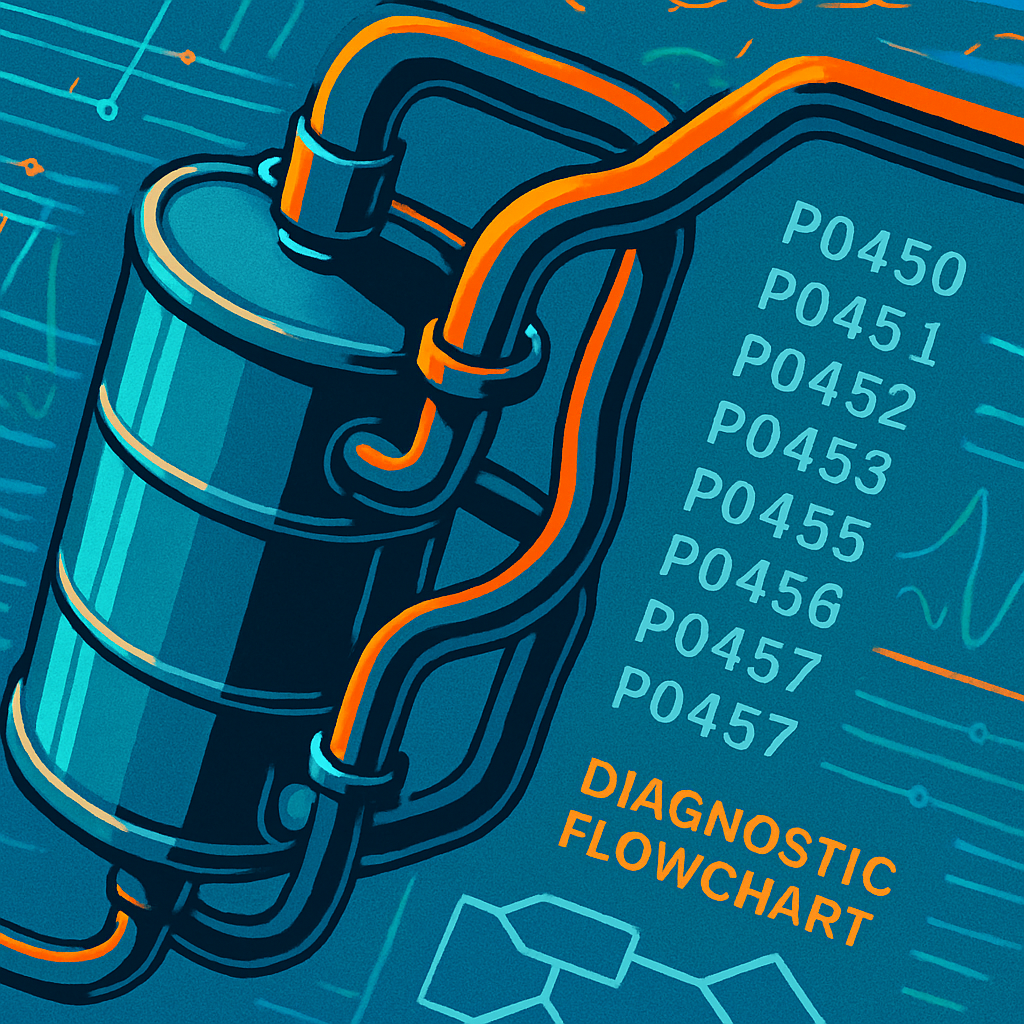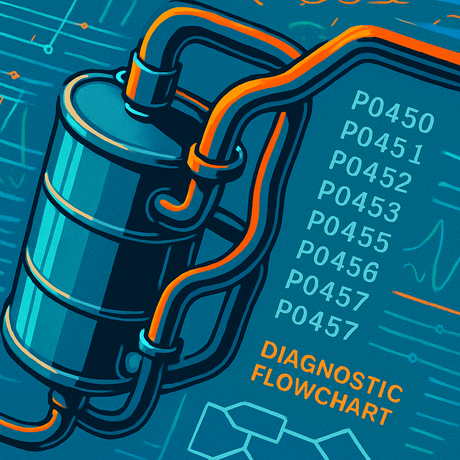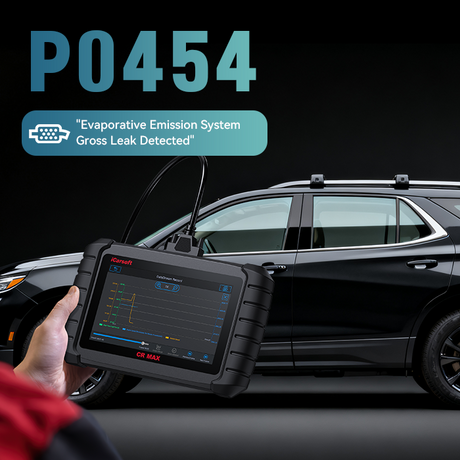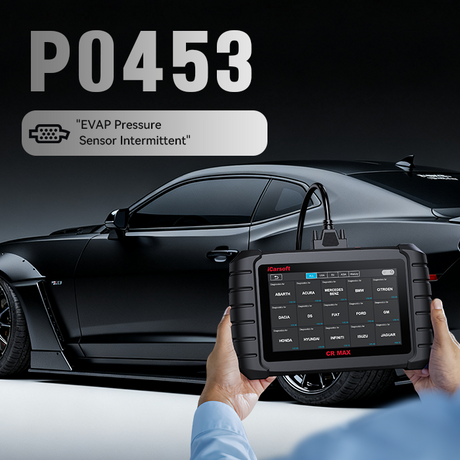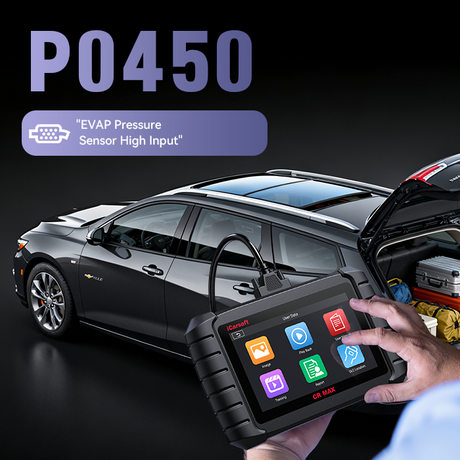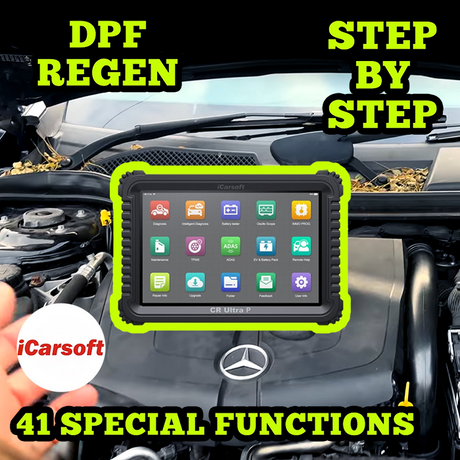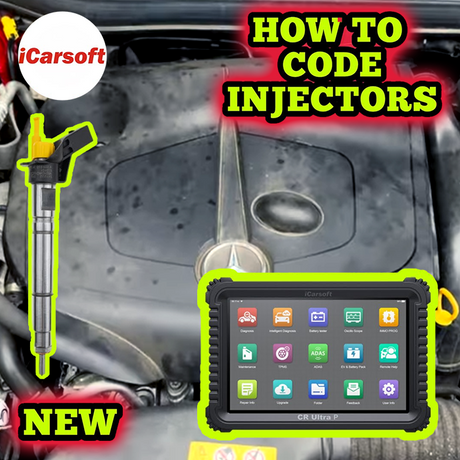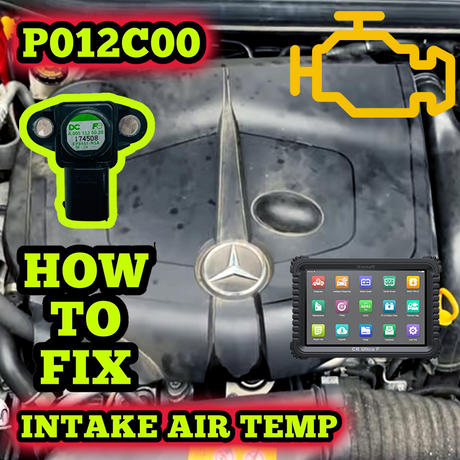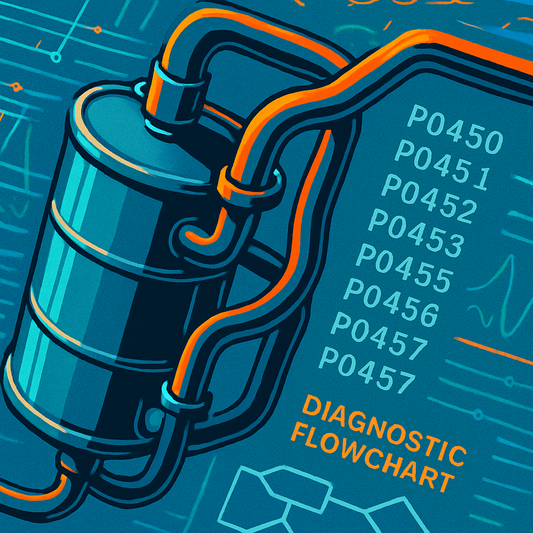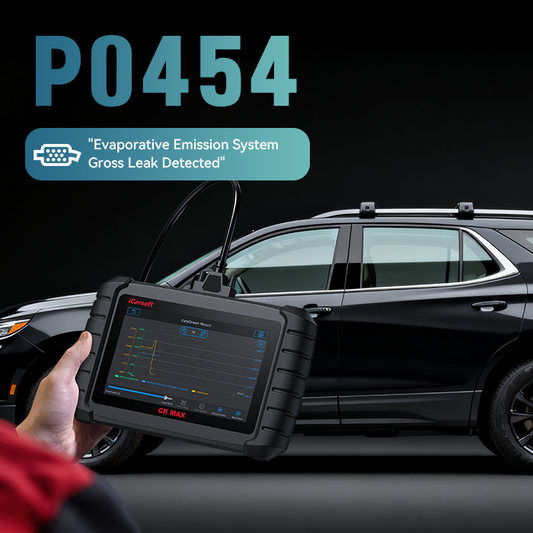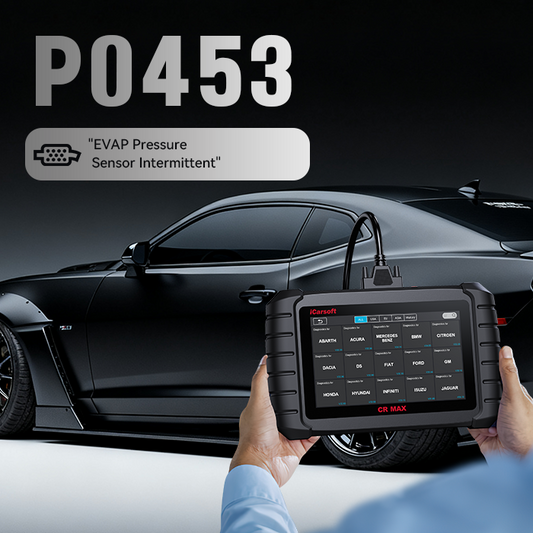EVAP Diagnostic Codes Cluster — P0450–P0457
Scope: P0450, P0451, P0452, P0453, P0454, P0455, P0456, P0457 — unified guide to diagnosis, common causes, and repair workflow for EVAP-related faults.
Why cluster EVAP codes?
EVAP codes all relate to the same system: the evaporative emissions control circuit that traps and routes fuel vapors. Although the specific DTC (P0450–P0457) pinpoints different components or signal conditions (sensor high/low, intermittent, gross leak, small leak, fuel cap loose), the troubleshooting logic and many fixes overlap — making a single cluster page useful for technicians and DIYers. Grouping these pages helps search engines and AI overviews recognize your site as an authoritative resource on EVAP diagnostics.
Quick index — click the code to open full guide
- P0450 – EVAP System Pressure Sensor Malfunction
- P0451 – EVAP Pressure Sensor Range/Performance
- P0452 – EVAP Pressure Sensor Low Input
- P0453 – EVAP Pressure Sensor High Input
- P0454 – EVAP Pressure Sensor Intermittent
- P0455 – EVAP System Large Leak Detected
- P0456 – EVAP System Small Leak Detected
- P0457 – EVAP System Fuel Cap Loose / Off
Unified Diagnosis Workflow (one flow to rule them all)
Use this checklist as your primary triage. It covers almost every P045x scenario and helps avoid unnecessary part replacement.
- Read codes & freeze-frame: Start with a full DTC scan (ECM/PCM and any related modules). Record freeze-frame data and any companion codes (e.g., P0440/P0441).
- Visual & basic checks: Inspect fuel cap, filler neck seal, gas cap O-ring and vent hoses. Tighten the cap — some codes clear after a single drive cycle.
- Live data & sensor check: Use Live Data to monitor EVAP pressure sensor voltage and vent/purge valve states. Look for stuck voltages (0V/5V), rapid fluctuations, or values outside manufacturer ranges.
- Connector & harness: Inspect pins, harness routing (chafing/heat exposure), and grounds. Wiggle-test connectors while watching live data for intermittent drops.
- Active tests: Command purge and vent valves with your scan tool and watch the sensor/pressure response. CR MAX supports many active EVAP tests and topology mapping to identify module communication faults.
- Leak localization: If P0455/P0456 suspected, perform a smoke test or use a vacuum/pressure pump to pressurize the EVAP circuit and watch for leaks (filler neck, hoses, canister, tank).
- Repair & verify: Replace only the failed component (sensor, valve, hose, gas cap). Clear codes, run readiness/EVAP monitors and complete a drive cycle to ensure the code doesn’t return.
Common causes by code (quick reference)
| Code | Typical Meaning | Most Likely Fixes |
|---|---|---|
| P0450 | EVAP pressure sensor malfunction | Sensor replacement, harness repair, connector clean |
| P0451 | Sensor range/performance out of spec | Sensor & wiring test, check ref voltage, replace sensor |
| P0452 | Low input / low voltage | Check 5V ref & ground, repair open circuit |
| P0453 | High input / high voltage | Short-to-voltage repair, connector/circuit replacement |
| P0454 | Intermittent sensor signal | Wiggle-test harness, replace corroded pins, secure routing |
| P0455 | Large (gross) EVAP leak | Gas cap, filler neck seal, cracked hose, canister, smoke test |
| P0456 | Small EVAP leak (tiny leak) | Pinhole hose, valve seal, clamp replacement, smoke test |
| P0457 | Fuel cap loose / off | Tighten/replace gas cap, clear code |
Recommended tools & workflow
For efficient EVAP troubleshooting we recommend:
- iCarsoft CR MAX — full-system scanning, Live Data, active tests, EVAP monitors and topology mapping. (product page)
- Smoke machine (portable) — finds leak locations visually
- Digital multimeter — verify 5V reference & ground
- Vacuum/pressure pump — bench-test valves and canister
Typical workflow: Scan → Live data → Active test → Smoke/pressure test → Repair → Clear codes → Drive cycle verification.
FAQ — quick answers
Q: I have P0455 — can I just tighten the gas cap?
A: Always try the gas cap first (tighten until it clicks). Many P0455 incidents resolve after a cap replace, but if the code persists run a smoke test.
Q: How do I know if the EVAP sensor is electrical or a leak?
A: Use Live Data to watch the sensor signal. If voltage is stuck at 0V or 5V, or is wildly noisy regardless of actuator commands, suspect electrical. If the sensor reads valid pressure changes but codes persist, check for physical leaks.
Q: Will clearing codes hide the problem?
A: Clearing codes removes the warning temporarily but does not fix the root cause. Always resolve the underlying fault and confirm readiness monitors complete before considering the repair done.
Q: How long after repair should I wait to see code cleared permanently?
A: After repair, clear codes then complete a full drive cycle (city + highway) or run EVAP self-tests via CR MAX. Some vehicles require several ignition cycles for monitors to show readiness.
Suggested internal linking strategy
To maximize topical authority, add a short “See also” box to each P045x article pointing back to this cluster page, and link between related codes (e.g., P0455 ↔ P0456). This creates a tight internal mesh that signals to search engines the pages form a coherent technical cluster.

